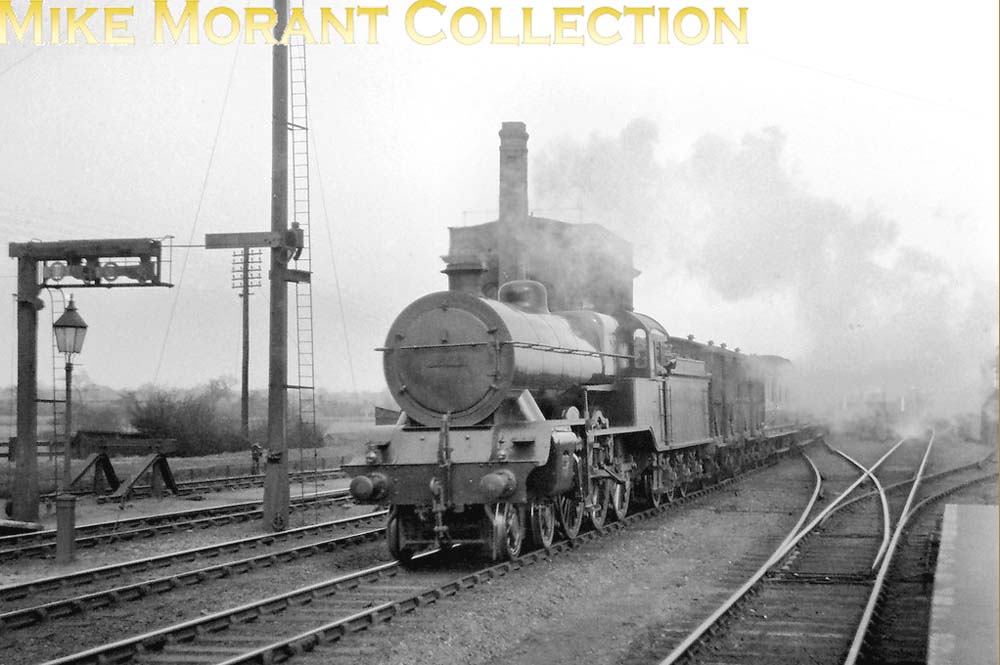 |
|
London North Western
Railway:

Midland
Railway:

Stratford
Midland Junction Railway
|

|
LMS Route: Rugby to Tamworth
Tamworth Station: lnwr_tam3650
 |
An unidentified ex-L&Y Hughes designed 4-6-0
'Dreadnoght' class locomotive passes Tamworth Water Tower on a down express
service. For a short period of time L&Y Dreadnoughts operated on the West
Coast as the LNWR and LMS searched for a locomotive both powerful and economic
enough to haul the heavy loads. However the Dreadnought wasn't as good as the
LNWR's Claughton class so this experiment did not last long. In their original
form the locomotives were described as 'poor performers' suffering coal
consumption as high as 100 pounds per mile which together with numerous
mechanical problems caused very poor reliability. Around the time of their
construction, they were nicknamed 'Dreadnoughts' on account of their large
size, after the then new Royal Navy battleship HMS Dreadnought. As designed,
they were fitted with a saturated boiler, slides valves and Joy valve gear. In
1919–20, fifteen were rebuilt with superheaters, piston valves,
Walschaerts valve gear and slightly larger cylinders. The nominal tractive
effort of the rebuilds was 28,879 lbf which made these engines for a time (at
least on paper) the most powerful in Great Britain until 1922 when the Gresley
Pacifics appeared. The rebuilt locomotives were reported to be 'a good
workmanlike engine' and 'an engine thoroughly master of its work' although
still with a coal consumption much too heavy.
The L&Y and LNWR had in fact merged one year before
grouping combining on 1st January 1922. The LNWR's CME was Hewitt Pearson
Montague Beames having only just taken over following the sudden death of
Charles Bowen Cooke who had been in post since 1909 until his death in 1920.
However George Hughes had been the L&Y CME since 1904 and as seniority was
the driver of promotion, it was the latter who became CME of the LMS as he was
also senior to the Midland Railway's CME Henry Fowler.
 back back

|
